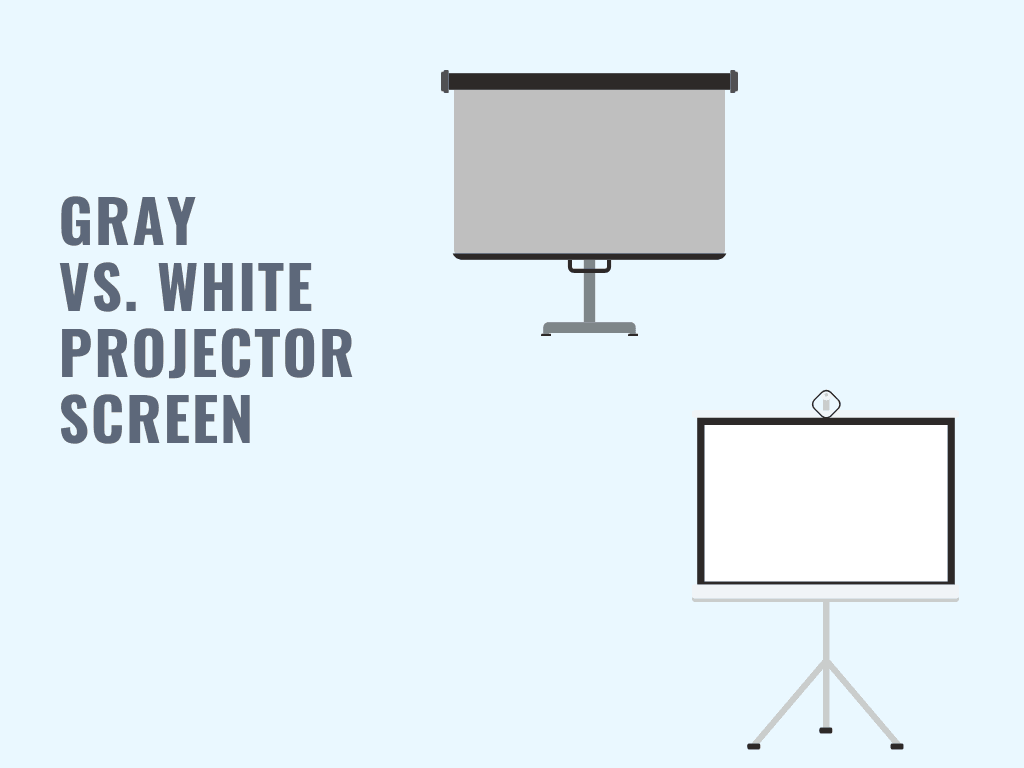Do you know the difference between a gray or white projector screen? If not, you’re not alone. Most people don’t know the difference, but it’s an important distinction to make when choosing a projector screen. In this blog post, we’ll break down the differences between gray and white screens so you can make an informed decision when purchasing your own screen. Let’s get started!
Gray projector screens are perfect for home theaters because they provide a true-to-life picture.
If you’re looking for the best possible picture quality for your home theater, you need a gray projector screen. Gray screens provide a true-to-life picture by cancelling out the “color cast” of other screens. This means that colors will appear more accurate and natural, making for a more immersive viewing experience. In addition, gray screens have a higher gain than other screens, meaning that they are better able to reflect light. This makes them ideal for use in rooms with ambient light, as it will help to reduce the amount of light bleed. So if you’re looking for the best possible picture quality, go with a gray projector screen. You won’t be disappointed.
White projector screens are better for business and educational presentations because they reflect more light.
For business and educational presentations, white projector screens are better than gray ones. Gray screens absorb more light, which can make the images on the screen appear dim. White screens reflect more light, making the images appear brighter. In addition, white screens provide a higher level of contrast than gray ones. This means that the colors on the screen will be more vivid, making it easier for the audience to see details. As a result, white screens are a better choice for presentations that require clear and bright images.
Gray projector screens can be used in any type of lighting condition, while white projector screens work best in well-lit rooms.
While most projector screens are white, gray screens are becoming increasingly popular. Gray screens offer several advantages over white screens. First, gray screens do not wash out as easily as white screens, making them ideal for use in rooms with high levels of ambient light. Second, gray screens provide better contrast than white screens, resulting in a sharper image. Finally, gray screens tend to be less expensive than white screens. As a result, they are an excellent choice for budget-conscious consumers. However, one drawback of gray screens is that they do not work well in low-light conditions. For this reason, they are best suited for use in rooms that are well lit.
Gray projector screens are less reflective than white projector screens, which may be preferable for some people.
Gray screens are less reflective than white screens, which may be preferable for some people. The gray tint filters out some of the light, making it less likely to reflect back into the viewer’s eyes. This can be especially beneficial in dark rooms, where a brighter screen would be more jarring. Grayscale screens also tend to have better contrast ratios, making them ideal for displaying high-quality images. Some viewers may prefer the cleaner look of a white screen, or they may find that a gray screen makes colors appear dull. Ultimately, it is up to the viewer to decide which type of screen is best for their needs.
Gray projector screens tend to be more expensive than white projector screens.
Deciding on a projector screen can be tricky- there are so many factors to consider! However, one factor that you might not have thought about is the color of the screen. Most screens are either white or gray, but did you know that there is a difference between the two? Gray screens tend to be more expensive than white screens, but they also have some distinct advantages. Gray screens provide better contrast than white screens, meaning that images will appear sharper and more detailed. They also tend to reduce glare, making them ideal for use in bright rooms. As a result, gray screens are often the best choice for serious home theater enthusiasts. However, if you’re on a budget, a white screen will still provide a great viewing experience.
Conclusion
If you’re looking for a projector screen to use in your home theater, go with a gray screen for the best results. If you need a projector screen for business or professional presentations, choose white instead.





























